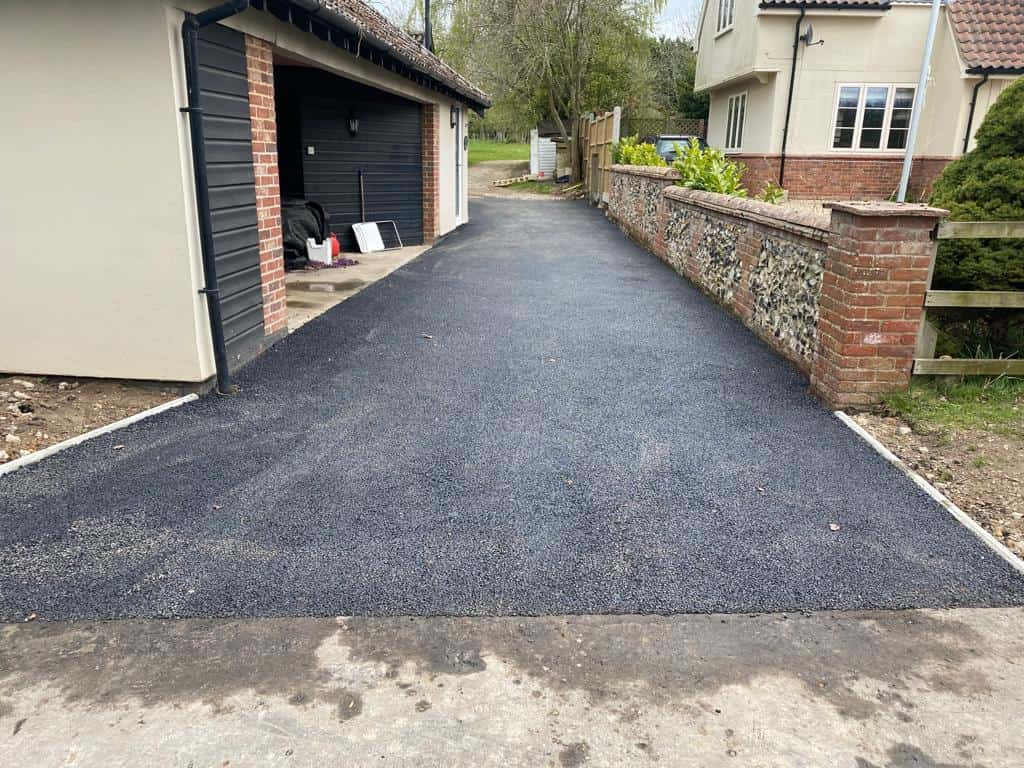12 Common Surface Problems and How Tarmac Solves Them
Introduction
Driveways, access roads, and paved areas face constant wear and tear from weather, vehicles, and foot traffic. Over time, common surface problems begin to appear—cracks, sinking, puddles and uneven patches that not only spoil the look of your property but also pose safety risks. Fortunately, tarmac remains one of the most effective and versatile surfacing solutions for overcoming these issues.
At Hitchin Driveways & Patios, we’ve helped countless homeowners and businesses across Hitchin and Hertfordshire resolve long-standing surface problems with durable, cost-effective tarmac solutions. Here, we explore 12 of the most common surface issues and explain how tarmac helps solve each one.
1. Cracks in the Surface
Over time, temperature changes and ground movement can cause rigid surfaces like concrete or old paving to crack. These cracks widen as water seeps in and freezes during colder months.
Tarmac benefit:
Tarmac is flexible and naturally adapts to minor shifts in the ground, reducing the likelihood of cracks forming. If cracks do appear, they’re easy and cost-effective to repair.
2. Potholes
Potholes are more than just unsightly—they can damage tyres, cause trips, and worsen quickly if not treated. They often result from neglected cracks or pooling water weakening the surface.
Tarmac benefit:
Tarmac allows for straightforward patch repairs, and when properly installed, resists pothole formation far better than loose or aged surfaces.
3. Uneven Levels
Settling soil, poor sub-base preparation or tree roots can cause surfaces to sink or heave, making driveways and paths uneven and unsafe.
Tarmac benefit:
When laid with a strong, well-compacted sub-base, tarmac offers a smooth, stable finish that remains even over time.
4. Poor Drainage and Water Pooling
Water pooling on a surface can lead to deterioration, moss growth, and slipping hazards. This often occurs on improperly graded surfaces or where porous materials have failed.
Tarmac benefit:
Tarmac can be laid with precise grading to promote water runoff, preventing standing water and improving overall surface longevity.
5. Weed Growth
Weeds commonly sprout between paving joints or gravel driveways, breaking apart the surface and requiring frequent maintenance.
Tarmac benefit:
Tarmac offers a solid, sealed surface that leaves no gaps for weeds to take root, dramatically reducing unwanted growth.
6. Loose Stones on Gravel Surfaces
Gravel can scatter with use, especially in areas with regular foot or vehicle traffic. This causes bald patches and uneven footing.
Tarmac benefit:
Tarmac provides a bound, cohesive surface that stays in place, reducing mess and making access easier for all users.
7. Faded or Patchy Appearance
Older surfaces often fade or develop patchy discolouration over time, especially when different repairs or materials have been added.
Tarmac benefit:
Tarmac offers a clean, uniform finish in deep black or red tones, giving your property a polished and professional appearance.
8. Slippery Surfaces in Wet Weather
Some materials become dangerously slippery when wet or icy, posing a risk to both pedestrians and drivers.
Tarmac benefit:
With its textured surface and optional anti-slip additives, tarmac offers excellent grip year-round, even in wet or frosty conditions.
9. Difficult Maintenance and Cleaning
Surfaces like block paving require regular sweeping, re-sanding and weed control, while gravel needs frequent raking and topping up.
Tarmac benefit:
Tarmac is incredibly low-maintenance—easy to clean, resistant to moss, and doesn’t require constant upkeep.
10. Noisy Driveways
Loose surfaces can be noisy underfoot or when driven on, which can be disruptive in residential areas.
Tarmac benefit:
Tarmac provides a quieter driving and walking experience, absorbing some sound and offering a smoother transition from road to property.
11. Fragile Edges
Paving slabs or resin surfaces can chip at the edges or begin to crumble where there’s no solid border or containment.
Tarmac benefit:
Tarmac edges can be rolled or reinforced during installation to provide long-lasting strength, especially when paired with concrete kerbs or block edging.
12. Unsuitable for Heavy Loads
Some surfaces can’t handle heavier vehicles such as vans, delivery trucks or caravans, leading to early wear and failure.
Tarmac benefit:
With the right base preparation, tarmac can easily support heavier loads, making it ideal for both residential and commercial use.
Conclusion
Surface problems may be common, but they’re far from inevitable. With its strength, flexibility and ease of maintenance, tarmac offers a long-term solution to many of the frustrations faced by homeowners and property managers alike.
At Hitchin Driveways & Patios, we deliver professional tarmac installations that are tailored to your needs and built to withstand the test of time. Whether you’re resurfacing a tired driveway, upgrading a shared access road, or replacing problematic paths, our team is here to help. Contact us today for a reliable, high-quality surface that works with your property—not against it.
Call us on: 01462 558 498
Click here to find out more about Hitchin Driveways & Patios
Click here to complete our contact form and see how we can help with your driveway needs.

